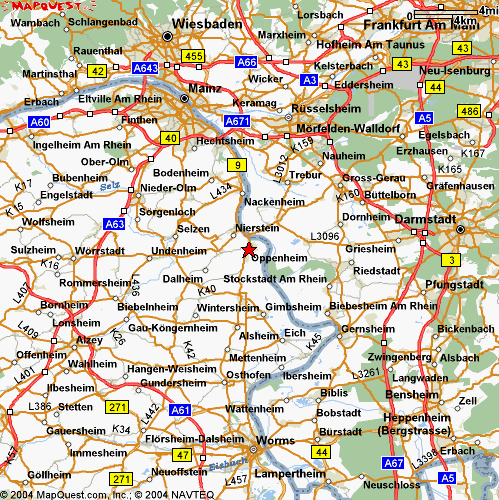|
|
 |
|
PALATINE IMMIGRANTS TO AMERICA

|
 |
|
Many ROWE families in America Descend from one common ancestor: Patatine German Nicholas Rau, who arrived in
America in 1710. In my case I descend from this ancestor in two lines. One of these lines is a direct RAU/RAUH/ROWE
line. This is my father's direct line. But I also have a line of descent through my mother's line, the DUMOND
line. This connection was recently discovered.
Below is a map of the Palatine region of Germany and the city Oppenheim which plays an important part in the history
of the Rau/Steinkopf families. "Marriage of Niclaus Rau and Gertraud Steinkopf, 3 Jan 1696, in the Oppenheim Lutheran
Church, Oppenheim in the Pfaltz; Johann Rau of Hohen-Selsen in Grafschaft Falkenstein. Johann is listed as father of
Niclaus." From: THE PALATINE FAMILIES OF NEW YORK 1710 by Henry Z. Jones

|
 |
|
|
|
 |
|
|
The Rhine-Hesse's leading wine town is OPPENHEIM, midway along the rail line between Mainz and Worms. It
has a hilly setting just back from the river, and is full of half-timbered houses set in narrow little streets. At its highest
point is the Katharinenkirche, a grandiose church built over more than two centuries: the towers are Romanesque, the east
end and transept early Gothic, the nave high Gothic. As an afterthought, the west chancel, which has the appearance and dimensions
of a self-contained church in its own right, was added in late Gothic style. Inside, look for the Oppenheimer Rose, a fourteenth-century
stained-glass window with elaborate tracery, and for the many epitaphs to members of prominent local families.Immediately
north of the church is the Michaelskapelle, which incorporates a charnel house containing the bones of some 20,000 citizens.
|
|
|
 |

